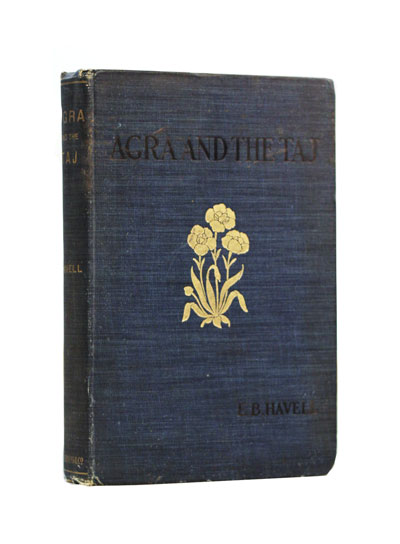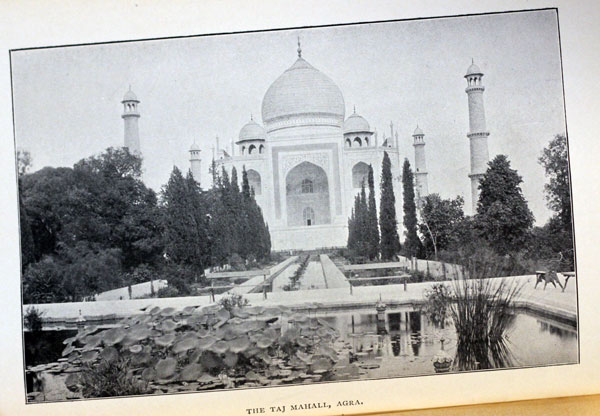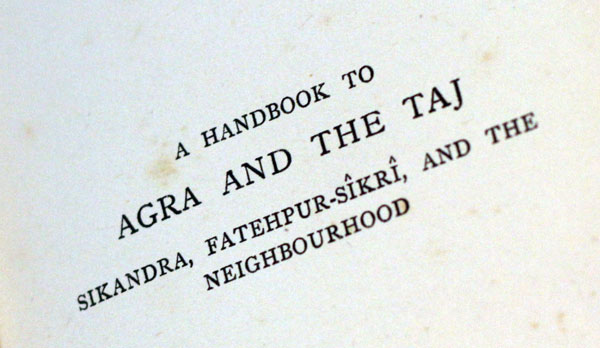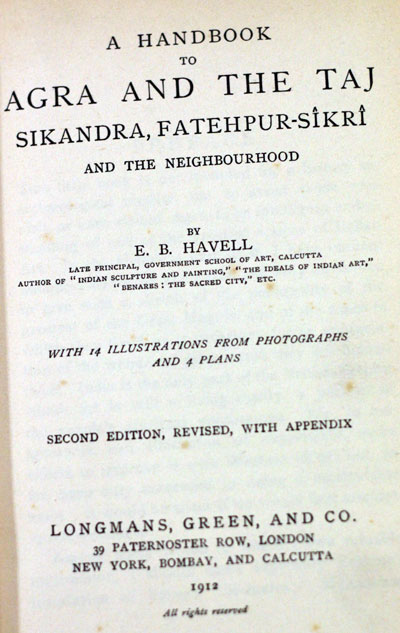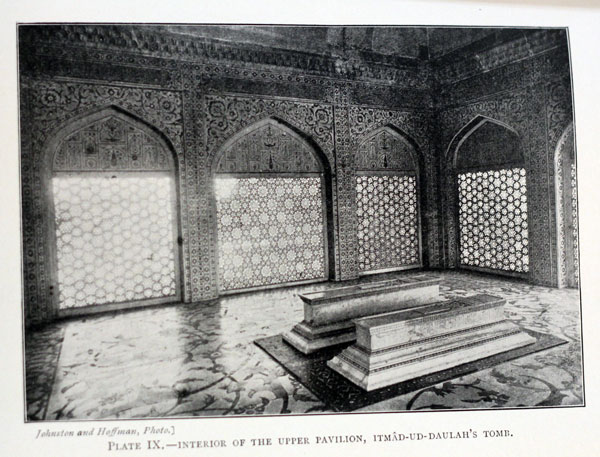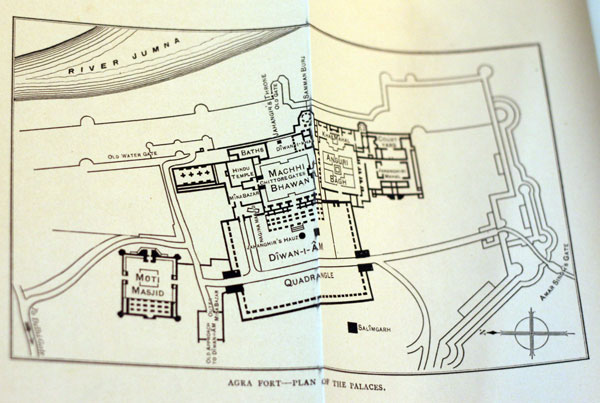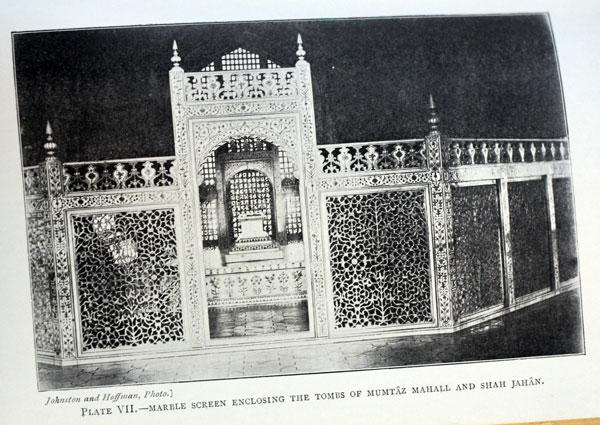This little book is not intended for a history or archæological treatise, but to assist those who visit, or have visited, Agra, to an intelligent understanding of one of the greatest epochs of Indian Art. In the historical part of it, I have omitted unimportant names and dates, and only attempted to give such a sketch of the personality of the greatest of the Great Moguls, and of the times in which they lived, as is necessary for an appreciation of the wonderful monuments they left behind them. India is the only part of the British Empire where art is still a living reality, a portion of the people’s spiritual possessions. We, in our ignorance and affectation of superiority, make efforts to improve it with Western ideas; but, so far, have only succeeded in doing it incalculable harm. It would be wiser if we would first attempt to understand it.
Among many works to which I owe valuable information, I should name especially Erskine’s translation of Babar’s “Memoirs”; Muhammad Latif’s “Agra, Historical and Descriptive”; and Edmund Smith’s “Fatehpur-Sikri.” My acknowledgments are due to Babu Abanindro Nath Tagore; to Mr. A. Polwhele, Executive Engineer, Agra; and to Mr. J.H. Marshall, Director-General of the Archæological Survey of India, for kind assistance rendered. I am particularly indebted to Messrs. Johnston and Hoffman, of Calcutta, for allowing me to make use of their valuable collection of photographs for the illustrations.
In quoting from “Bernier’s Travels,” I have used Constable’s translation, with Messrs. A. Constable & Co.’s kind permission. To the Editor of the “Nineteenth Century and After” I owe permission to make use of my article on “The Taj and its Designers,” published in that Review, June, 1903.
– from the introduction by E B Havell
List of Illustrations:
The Taj Mahal (frontis)
Plate I. A State Document with Shah Jahan’s “Royal Hand and Seal”
Plate II. Shah Jahan, From an Old Indian Miniature
Plate III. The Inner Delhi Gate, or Hathi Pol, Agra Fort
Plate IV. Marble Balcony, Overlooking the Inner Mîna Bazar, Agra Fort
Plate V. The Samman Burj, Agra Fort
Plate VI. Inner Courtyard of the Jahangiri Mahal, Agra Fort
Plate VII. Marble Screen Enclosing the Tombs of Mumtaz Mahal and Shah Jahan
Plate VIII. Itmâd-ud-daulah’s Tomb, Agra
Plate IX. Interior of the Upper Pavilion, Itmâd-ud-daulah’s Tomb
Plate X. Marble Sarcophagus on the Upper Story of Akbar’s Tomb, Sikandra
Plate XI. Interior of The Dîwan-i-Khâs, Fatehpur Sikri
Plate XII. Rajah Birbal’s Daughter’s House, Fatehpur Sikri
Plate XIII. The Baland Darwaza, Fatehpur Sikri
Plans
Agra Fort. Plan of the Palaces
Fatehpur Sikri. Plan Showing the Position of the Buildings
Fatehpur Sikri. Plan Showing the Walls and Gates
Fatehpur Sikri. Plan of Jodh Bai’s Palace.

